financial markets and institutions 金融市场与机构
- 格式:ppt
- 大小:864.00 KB
- 文档页数:78
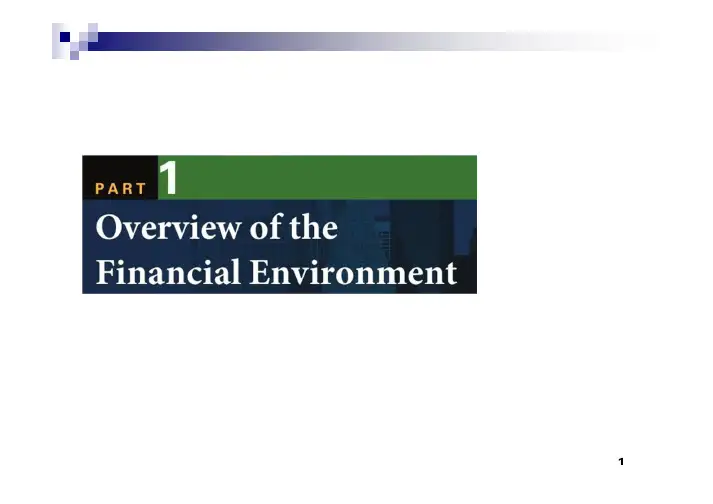
Chapter 1Financial Markets andInstitutionsFinancial Institutions and Markets, 7e, Jeff MaduraChapter OutlineFinancial markets金融市场Types of financial markets金融市场的类型Securities traded in financial markets金融市场上交易的证券Valuing securities in financial markets金融市场上证券的估价Market efficiency市场的有效性Financial market regulation金融市场监管Global financial markets全球金融市场Role of financial institutions in financial markets金融机构的作用Comparison of roles among financial institutions金融机构作用的比较 Financial institutions金融机构Global expansion by financial institutions金融机构的全球扩张Financial MarketsA financial market is a market in which financial assets(securities) can be purchased or soldFinancial markets facilitate financing and investing by households, firms, and government agenciesParticipants that provide funds are called surplus unitse.g., householdsParticipants that enter markets to obtain funds are deficit unitse.g., the governmentA major participant in financial markets is the Fed,because it controls the money supplySecurities represent a claim on the issuer. 证券代表对发行人的一种权利。
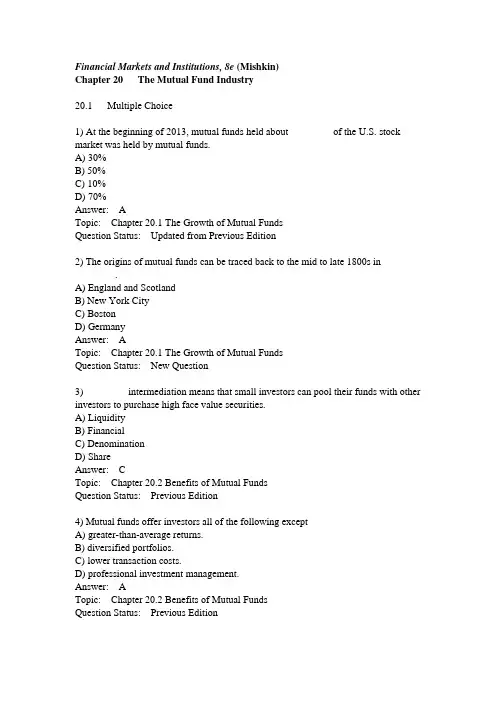
Financial Markets and Institutions, 8e (Mishkin)Chapter 20 The Mutual Fund Industry20.1 Multiple Choice1) At the beginning of 2013, mutual funds held about ________ of the U.S. stock market was held by mutual funds.A) 30%B) 50%C) 10%D) 70%Answer: ATopic: Chapter 20.1 The Growth of Mutual FundsQuestion Status: Updated from Previous Edition2) The origins of mutual funds can be traced back to the mid to late 1800s in________.A) England and ScotlandB) New York CityC) BostonD) GermanyAnswer: ATopic: Chapter 20.1 The Growth of Mutual FundsQuestion Status: New Question3) ________ intermediation means that small investors can pool their funds with other investors to purchase high face value securities.A) LiquidityB) FinancialC) DenominationD) ShareAnswer: CTopic: Chapter 20.2 Benefits of Mutual FundsQuestion Status: Previous Edition4) Mutual funds offer investors all of the following exceptA) greater-than-average returns.B) diversified portfolios.C) lower transaction costs.D) professional investment management.Answer: ATopic: Chapter 20.2 Benefits of Mutual FundsQuestion Status: Previous Edition5) Mutual fundsA) pool the resources of many small investors by selling these investors shares and using the proceeds to buy securities.B) allow small investors to obtain the benefits of lower transaction costs in purchasing securities.C) provide small investors a diversified portfolio that reduces risk.D) do all of the above.E) do only A and B of the above.Answer: DTopic: Chapter 20.2 Benefits of Mutual FundsQuestion Status: Previous Edition6) ________ enables mutual funds to consistently outperform a randomly selected group of stocks.A) Managerial expertiseB) DiversificationC) Denomination intermediationD) None of the aboveAnswer: DTopic: Chapter 20.2 Benefits of Mutual FundsQuestion Status: Previous Edition7) At the end of 2012 there were over ________ separate mutual funds with total assets over ________.A) 800; $10 trillionB) 7,500; $13 trillionC) 10,000; $10 trillionD) 1,000; $7 trillionAnswer: BTopic: Chapter 20.2 Benefits of Mutual FundsQuestion Status: Updated from Previous Edition8) Most mutual funds are structured in two ways. The most common structure is a(n) ________ fund, from which shares can be redeemed at any time at a price that is tied to the asset value of the fund. A(n) ________ fund has a fixed number of nonredeemable shares that are traded in the over-the-counter market.A) closed-end; open-endB) open-end; closed-endC) no-load; closed-endD) no-load; loadE) load; no-loadAnswer: BTopic: Chapter 20.3 Mutual Fund StructureQuestion Status: Previous Edition9) Which of the following is an advantage to investors of an open-end mutual fund?A) Once all the shares have been sold, the investor does not have to put in more money.B) The investors can sell their shares in the over-the-counter market with low transaction fees.C) The fund agrees to redeem shares at any time.D) The market value of the fund's shares may be higher than the value of the assets held by the fund.Answer: CTopic: Chapter 20.3 Mutual Fund StructureQuestion Status: Previous Edition10) The net asset value of a mutual fund isA) determined by subtracting the fund's liabilities from its assets and dividing by the number of shares outstanding.B) determined by calculating the net price of the assets owned by the fund.C) calculated every 15 minutes and used for transactions occurring during the next 15-minute interval.D) calculated as the difference between the fund's assets and its liabilities. Answer: ATopic: Chapter 20.3 Mutual Fund StructureQuestion Status: Previous Edition11) ________ funds are the simplest type of investment funds to manage.A) BalancedB) Global equityC) GrowthD) IndexAnswer: DTopic: Chapter 20.4 Investment Objective ClassesQuestion Status: Previous Edition12) The majority of mutual fund assets are now owned byA) individual investors.B) institutional investors.C) fiduciaries.D) business organizations.E) retirees.Answer: ATopic: Chapter 20.2 Benefits of Mutual FundsQuestion Status: Previous Edition13) Capital appreciation funds select stocks of ________ and tend to be ________ risky than total return funds.A) large, established companies that pay dividends regularly; moreB) large, established companies that pay dividends regularly; lessC) companies expected to grow rapidly; moreD) companies expected to grow rapidly; lessAnswer: CTopic: Chapter 20.4 Investment Objective ClassesQuestion Status: Previous Edition14) From largest to smallest in terms of total assets, the four classes of mutual funds areA) equity funds, bond funds, hybrid funds, money market funds.B) equity funds, money market funds, bond funds, hybrid funds.C) money market funds, equity funds, hybrid funds, bond funds.D) bond funds, money market funds, equity funds, hybrid funds.Answer: BTopic: Chapter 20.4 Investment Objective ClassesQuestion Status: Previous Edition15) Measured by assets, the most popular type of bond fund is the ________ bond fund.A) state municipalB) strategic incomeC) governmentD) high-yieldAnswer: BTopic: Chapter 20.4 Investment Objective ClassesQuestion Status: Previous Edition16) People who take their money out of insured bank deposits to invest in uninsured money market mutual funds have ________ risk because money market funds invest in ________ assets.A) high; long-termB) low; short-termC) high; short-termD) low; long-termAnswer: BTopic: Chapter 20.4 Investment Objective ClassesQuestion Status: Previous Edition17) The largest share of assets held by money market mutual funds isA) Treasury bills.B) certificates of deposit.C) commercial paper.D) repurchase agreements.Answer: CTopic: Chapter 20.4 Investment Objective ClassesQuestion Status: Previous Edition18) Which of the following is a feature of index funds?A) They have lower fees.B) They select and hold stocks to match the performance of a stock index.C) They do not require managers to select stocks and decide when to buy and sell.D) All of the above.Answer: DTopic: Chapter 20.4 Investment Objective ClassesQuestion Status: Previous Edition19) A deferred-load mutual fund charges a commissionA) when shares are purchased.B) when shares are sold.C) both when shares are purchased and when they are sold.D) when shares are redeemed.Answer: DTopic: Chapter 20.5 Fee Structure of Investment FundsQuestion Status: Previous Edition20) Over the past twenty years, mutual fund fees have ________, largely because________.A) fallen; SEC fee disclosure rules have led to greater competitionB) risen; investors have learned that funds with high fees provide better performanceC) risen; there has been collusion between large mutual fund companiesD) fallen; advances in information technology have lowered transaction costs Answer: ATopic: Chapter 20.5 Fee Structure of Investment FundsQuestion Status: Previous Edition21) Which of the following is most likely to be a no-load fund?A) Value fundsB) Hedge fundsC) Growth fundsD) Index fundsAnswer: DTopic: Chapter 20.5 Fee Structure of Investment FundsQuestion Status: Previous Edition22) When investors switch between funds within the same fund family, mutual funds may chargeA) a contingent deferred sales charge.B) a redemption fee.C) an exchange fee.D) 12b-1 fees.E) an account maintenance fee.Answer: CTopic: Chapter 20.5 Fee Structure of Investment FundsQuestion Status: Previous Edition23) The Securities Acts of 1933 and 1934 did notA) regulate the activities of investment funds.B) require funds to register with the SEC.C) include antifraud rules covering the purchase and sale of fund shares.D) apply to investment funds.Answer: BTopic: Chapter 20.6 Regulation of Mutual FundsQuestion Status: Previous Edition24) The largest share of total investment in mutual funds is inA) stock funds.B) hybrid funds.C) bond funds.D) money market funds.Answer: ATopic: Chapter 20.4 Investment Objective ClassesQuestion Status: Previous Edition25) Over ________ of the total daily volume in stocks is due to institutions initiating trades.A) 70%B) 50%C) 25%D) 90%Answer: ATopic: Chapter 20.6 Regulation of Mutual FundsQuestion Status: New Question26) Hedge funds areA) low risk because they are market-neutral.B) low risk if they buy Treasury bonds.C) low risk because they hedge their investments.D) high risk because they are market-neutral.E) high risk, even though they may be market-neutral.Answer: ETopic: Chapter 20.7 Hedge FundsQuestion Status: Previous Edition27) The near collapse of Long Term Capital Management was caused byA) the high management fees charged by the fund's two Nobel Prize winners.B) the fund's high leverage ratio of 20 to 1.C) a sharp decrease in the spread between corporate bonds and Treasury bonds.D) a sharp increase in the spread between corporate bonds and Treasury bonds.E) the fund's shift away from a market-neutral investment strategy.Answer: DTopic: Chapter 20.7 Hedge FundsQuestion Status: Previous Edition28) Conflicts arise in the mutual funds industry because ________ cannot effectively monitor ________.A) investment advisers; directorsB) directors; shareholdersC) shareholders; investment advisersD) investment advisers; stocks that will outperform the overall marketAnswer: CTopic: Chapter 20.8 Conflicts of Interest in the Mutual Fund IndustryQuestion Status: Previous Edition29) Late trading is the practice of allowing orders received ________ to trade at the ________ net asset value.A) before 4:00 PM; 4:00 PMB) after 4:00 PM; 4:00 PMC) after 4:00 PM; next day'sD) before 4:00 PM; previous day'sAnswer: BTopic: Chapter 20.8 Conflicts of Interest in the Mutual Fund IndustryQuestion Status: Previous Edition30) Market timingA) takes advantage of time differences between the east and west coasts of the United States.B) takes advantage of arbitrage opportunities in foreign stocks.C) takes advantage of the time lag between the receipt and execution of orders.D) is discouraged by the stiff fees mutual funds charge every investor for buying and then selling shares on the same day.Answer: BTopic: Chapter 20.8 Conflicts of Interest in the Mutual Fund IndustryQuestion Status: Previous Edition31) Late trading and market timingA) allow large, favored investors in a mutual fund to profit at the expense of other investors in the fund.B) hurt ordinary investors by increasing the number of fund shares and diluting the fund's net asset value.C) are both A and B of the above.D) are none of the above.Answer: CTopic: Chapter 20.8 Conflicts of Interest in the Mutual Fund Industry Question Status: Previous Edition32) Which of the following is not a proposal to deal with abuses in the mutual fund industry?A) Strictly enforce the 4:00 PM net asset value rule.B) Make redemption fees mandatory.C) Disclose compensation arrangements for investment advisers.D) Increase the number of dependent directors.Answer: DTopic: Chapter 20.8 Conflicts of Interest in the Mutual Fund IndustryQuestion Status: Previous Edition33) ________ means the investors can convert their investment into cash quickly at a low cost.A) Liquidity intermediationB) Denomination intermediationC) DiversificationD) Managerial expertiseAnswer: ATopic: Chapter 20.2 Benefits of Mutual FundsQuestion Status: Previous Edition34) At the start of 2014, one share of Berkshire Hathaway's A-shares was trading at over $150,000. ________ in an mutual fund gives a small investor access to these shares.A) Liquidity intermediationB) Denomination intermediationC) DiversificationD) Managerial expertiseAnswer: BTopic: Chapter 20.2 Benefits of Mutual FundsQuestion Status: Previous Edition35) Mutual fund companies frequently offer a number of separate mutual funds called ________.A) indexesB) complexesC) componentsD) actuariesAnswer: BTopic: Chapter 20.4 Investment Objective ClassesQuestion Status: Previous Edition36) Equity funds can be placed in which class according to the Investment Company Institute?A) Capital appreciation fundsB) World fundsC) Total return fundsD) All of the aboveAnswer: DTopic: Chapter 20.4 Investment Objective Classes Question Status: Previous Edition37) Government bonds are essentially default risk-free, ________ returns.A) and will yield highB) and will yield the highestC) but will have relatively lowD) none of the aboveAnswer: CTopic: Chapter 20.4 Investment Objective ClassesQuestion Status: Previous Edition38) ________ bonds combine stocks into one fund.A) HybridB) Money marketC) MunicipalD) EquityAnswer: ATopic: Chapter 20.4 Investment Objective ClassesQuestion Status: Previous Edition39) All ________ are open-end investment funds that invest only in money market securities.A) Stock fundsB) Bond fundsC) Money market mutual fundsD) all of the aboveAnswer: CTopic: Chapter 20.4 Investment Objective ClassesQuestion Status: Previous Edition20.2 True/False1) The larger the number of shares traded in a stock transaction, the lower the transaction costs per share.Answer: TRUETopic: Chapter 20.2 Benefits of Mutual FundsQuestion Status: Previous Edition2) The increase in the number of defined contribution pension funds has slowed the growth of mutual funds.Answer: FALSETopic: Chapter 20.1 The Growth of Mutual FundsQuestion Status: Previous Edition3) Mutual funds accounted for $5.3 trillion, or 27%, of the $19.5 trillion U.S. retirement market at the beginning of 2013.Answer: TRUETopic: Chapter 20.2 Benefits of Mutual FundsQuestion Status: Updated from Previous Edition4) Among the investors in mutual funds, only about 25% cite preparing for retirement as one of their main reasons for holding shares.Answer: FALSETopic: Chapter 20.2 Benefits of Mutual FundsQuestion Status: Updated from Previous Edition5) Open-end mutual funds are more common than closed-end funds.Answer: TRUETopic: Chapter 20.3 Mutual Fund StructureQuestion Status: Previous Edition6) The net asset value of a mutual fund is the average market price of the stocks, bonds, and other assets the fund owns.Answer: FALSETopic: Chapter 20.3 Mutual Fund StructureQuestion Status: Previous Edition7) A mutual fund's board of directors picks the securities that will be held and makes buy and sell decisions.Answer: FALSETopic: Chapter 20.4 Investment Objective ClassesQuestion Status: Previous Edition8) Money market mutual funds originated when the brokerage firm Merrill Lynch offered its customers an account from which funds could be taken to purchase securities and into which funds could be deposited when securities were sold. Answer: TRUETopic: Chapter 20.4 Investment Objective ClassesQuestion Status: Previous Edition9) A deferred load is a fee charged when shares in a mutual fund are redeemed. Answer: TRUETopic: Chapter 20.5 Fee Structure of Investment FundsQuestion Status: Previous Edition10) Several academic research studies show that investors earn higher returns by investing in mutual funds that charge higher fees.Answer: FALSETopic: Chapter 20.5 Fee Structure of Investment FundsQuestion Status: Previous Edition11) Hedge funds have a minimum investment requirement of between $100,000 and$20 million, with the typical minimum investment being $1 million.Answer: TRUETopic: Chapter 20.7 Hedge FundsQuestion Status: New Question12) SEC research suggests that about three-fourths of mutual funds let privileged shareholders engage in market timing.Answer: TRUETopic: Chapter 20.8 Conflicts of Interest in the Mutual Fund IndustryQuestion Status: Previous Edition13) One factor explaining the rapid growth in mutual funds is that they are financial intermediaries that are not regulated by the federal government.Answer: FALSETopic: Chapter 20.1 The Growth of Mutual FundsQuestion Status: Previous Edition14) Whether a fund is organized as a closed- or an open-end fund, is will have the same basic organizational structure.Answer: TRUETopic: Chapter 20.3 Mutual Fund StructureQuestion Status: Previous Edition15) The primary purpose of loads is to provide compensation for sales brokers. Answer: TRUETopic: Chapter 20.5 Fee Structure of Investment FundsQuestion Status: Previous Edition16) Mutual funds are regulated under four federal laws designed to protect investors. Answer: TRUETopic: Chapter 20.6 Regulation of Mutual FundsQuestion Status: Previous Edition20.3 Essay1) What benefits do mutual funds offer investors?Topic: Chapter 20.2 Benefits of Mutual FundsQuestion Status: Previous Edition2) How is a mutual fund's net asset value calculated?Topic: Chapter 20.3 Mutual Fund StructureQuestion Status: Previous Edition3) How did money market mutual funds originate and why did they become especially popular in the late 1970s and early 1980s?Topic: Chapter 20.1 The Growth of Mutual FundsQuestion Status: Previous Edition4) How does the governance structure of mutual funds lead to asymmetric information and conflicts of interest?Topic: Chapter 20.8 Conflicts of Interest in the Mutual Fund IndustryQuestion Status: Previous Edition5) Describe the practices of late trading and market timing and explain how these practices harm a mutual fund's shareholders.Topic: Chapter 20.8 Conflicts of Interest in the Mutual Fund IndustryQuestion Status: Previous Edition6) Discuss the proposals that have been made to reduce the conflict of interest abuses in the mutual funds industry.Topic: Chapter 20.8 Conflicts of Interest in the Mutual Fund IndustryQuestion Status: Previous Edition7) How is an index fund different from the other four primary investment objective classes for mutual funds?Topic: Chapter 20.4 Investment Objective ClassesQuestion Status: New Question8) Discuss the four primary classes of mutual funds available to investors.Topic: Chapter 20.4 Investment Objective ClassesQuestion Status: Previous Edition9) What are the five benefits of mutual funds?Topic: Chapter 20.2 Benefits of Mutual FundsQuestion Status: New Question10) What is the difference between an open-end and a closed-end mutual fund? Topic: Chapter 20.3 Mutual Fund StructureQuestion Status: New Question11) What are two key differences between a traditional mutual fund and a hedge fund?Topic: Chapter 20.7 Hedge FundsQuestion Status: New Question。
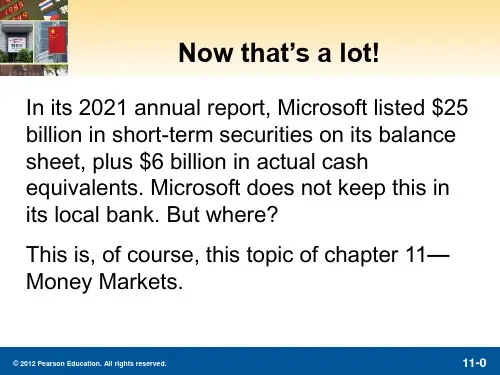
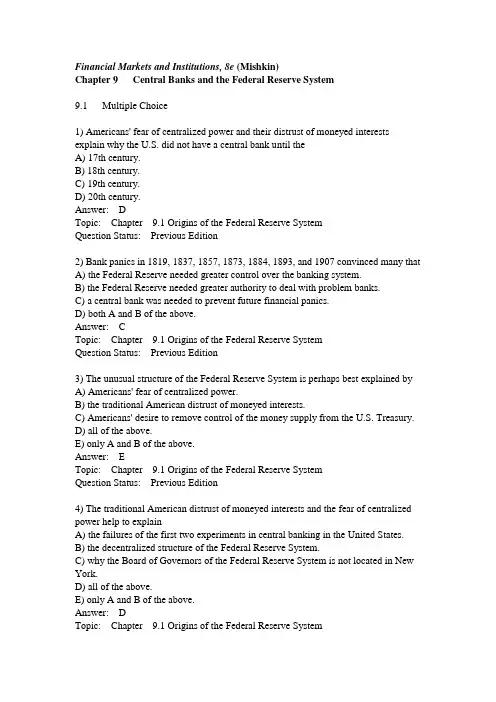
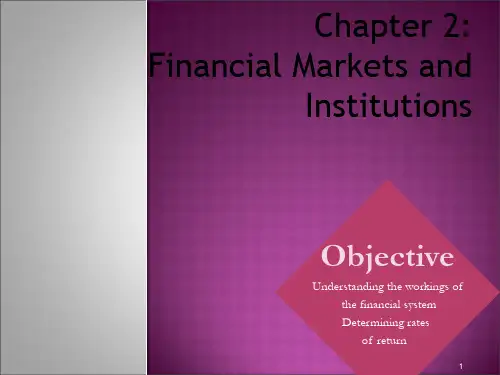

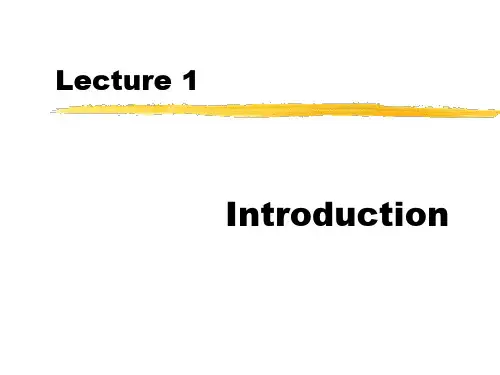
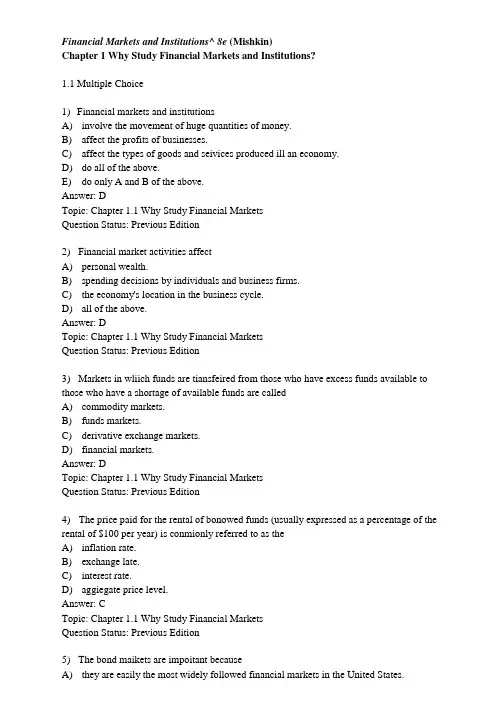
Financial Markets and Institutions^ 8e (Mishkin)Chapter 1 Why Study Financial Markets and Institutions?1.1 Multiple Choice1)Financial markets and institutionsA)involve the movement of huge quantities of money.B)affect the profits of businesses.C)affect the types of goods and seivices produced ill an economy.D)do all of the above.E)do only A and B of the above.Answer: DTopic: Chapter 1.1 Why Study Financial MarketsQuestion Status: Previous Edition2)Financial market activities affectA)personal wealth.B)spending decisions by individuals and business firms.C)the economy's location in the business cycle.D)all of the above.Answer: DTopic: Chapter 1.1 Why Study Financial MarketsQuestion Status: Previous Edition3)Markets in wliich funds are tiansfeired from those who have excess funds available to those who have a shortage of available funds are calledA)commodity markets.B)funds markets.C)derivative exchange markets.D)financial markets.Answer: DTopic: Chapter 1.1 Why Study Financial MarketsQuestion Status: Previous Edition4)The price paid for the rental of bonowed funds (usually expressed as a percentage of the rental of $100 per year) is conmionly referred to as theA)inflation rate.B)exchange late.C)interest rate.D)aggiegate price level.Answer: CTopic: Chapter 1.1 Why Study Financial MarketsQuestion Status: Previous Edition5)The bond maikets are impoitant becauseA)they are easily the most widely followed financial markets in the United States.B)they are the maikets where interest rates are deteimined.C)they are the markets where foreign exchange rates are determined.D)all of the above.Answer: BTopic: Chapter 1.1 Why Study Financial MaiketsQuestion Status: Previous Edition6)Interest rates are impoitant to financial institutions since an interest rate uicrease the cost of acquiring funds and the income fiom assets.A)decreases; decreasesB)increases; increasesC)decreases; increasesD)increases; decreasesAnswer: BTopic: Chapter 1.1 Why Study Financial MaiketsQuestion Status: Previous Edition7)Typically, increasing interest ratesA)discourages individuals fiom saving.B)discourages corporate investments.C)encourages coipoiate expansion.D)encourages coipoiate borrowing.E)none of the above.Answer: BTopic: Chapter 1.1 Why Study Financial MaiketsQuestion Status: Previous Edition8)Compared to interest rates on long-tenn U.S. govenmient bonds, interest rates onfluctuate more and are lower on average.A)medium-quality coipoiate bondsB)low-quality corporate bondsC)high-quality coipoiate bondsD)tluee-month Treasuiy billsE)none of the aboveAnswer: DTopic: Chapter 1.1 Why Study Financial MaiketsQuestion Status: Previous Edition9)Compared to interest rates on long-tenn U.S. govenmient bonds, interest rates on tluee-month Tieasuiy bills fluctuate and are on average.A)moie; lowerB)less; lowerC)moie; liigherD)less; higherAnswer: ATopic: Chapter 1.1 Why Study Financial MarketsQuestion Status: Previous Edition10)The stock market is important becauseA)it is where interest rates are determined.B)it is the most widely followed financial market in the United States.C)it is where foreign exchange rates are deteimined.D)all of the above.Answer: BTopic: Chapter 1.1 Why Study Financial MarketsQuestion Status: Previous Edition11)Stock prices since the 1980s have beenA)relatively stable, trending upward at a steady pace.B)relatively stable, tiending downward at a moderate rate.C)extremely volatile.D)unstable, trending downward at a moderate late.Answer: CTopic: Chapter 1.1 Why Study Financial MarketsQuestion Status: Previous Edition12)The largest one-day drop in the liistoiy of the Ainei ican stock markets occuii ed inA)1929.B)1987.C)2000.D)2001.Answer: BTopic: Chapter 1.1 Why Study Financial MarketsQuestion Status: Previous Edition13) A declining stock market index due to lower share pricesA)reduces people's wealth and as a result may reduce theii willingness to spend.B)increases people's wealth and as a result may increase their willingness to spend.C)decreases the amount of fiinds that business firms can raise by selling newly issued stock.D)both A and C of the above.E)both B and C of the above.Answer: DTopic: Chapter 1.1 Why Study Financial MarketsQuestion Status: Previous Edition14)Changes in stock pricesA)affect people's wealth and their willingness to spend.B)affect films' decisions to sell stock to finance investment spending.C)are characterized by considerable fluctuations.D)all of the above.E)only A and B of the above.Answer: DTopic: Chapter 1.1 Why Study Financial MarketsQuestion Status: Previous Edition15)(I) Debt markets are often referred to generically as the bond market.(II) A bond is a security that is a claim on the earnings and assets of a coiporation.A)(I) is true, (II) false.B)(I) is false, (II) true.C)Both are true.D)Both are false.Answer: ATopic: Chapter 1.1 Why Study Financial MarketsQuestion Status: Previous Edition16)(I) A bond is a debt security that promises to make paymen's periodically fbr a specified peiiod of time. (II) A stock is a security that is a claim on the earnings and assets of a corporation.A)(I) is true, (II) false.B)(I) is false, (II) true.C)Both are true.D)Both are false.Answer: CTopic: Chapter 1.1 Why Study Financial MarketsQuestion Status: Previous Edition17)The price of one countiy's currency in terms of another's is calledA)the foreign exchange rate.B)the interest rate.C)the Dow Jones industrial average.D)none of the above.Answer: ATopic: Chapter 1.1 Why Study Financial MarketsQuestion Status: Previous Edition18) A stronger dollar benefits and hurts .A)American businesses; American consumersB)American businesses; foreign businessesC)American consumers; American businessesD)foreign businesses; American consumersAnswer: CTopic: Chapter 1.1 Why Study Financial MarketsQuestion Status: Previous Edition19) A weaker dollar benefits and hurts .A)American businesses; American consumersB)American businesses; foreign consumersC)American consumers; American businessesD)foreign businesses; American consumersAnswer: ATopic: Chapter 1.1 Why Study Financial MarketsQuestion Status: Previous Edition20)From 1980 to early 1985 the dollar in value, thereby benefiting American.A)appreciated; businessesB)appreciated; consumeisC)depreciated; businessesD)depreciated; consumersAnswer: BTopic: Chapter 1.1 Why Study Financial MarketsQuestion Status: Previous Edition21)In general, from 2001 tluougli 2013, the dollar in value relative to major foreign cunencies.A)appreciatedB)depreciatedC)remained about the sameAnswer: BTopic: Chapter 1.1 Why Study Financial MarketsQuestion Status: New Question22)Money is defined asA)anything that is generally accepted in payment for goods and seivices or in the repayment of debt.B)bills of exchange.C) a riskless repositoiy of spending power.D)all of the above.E)only A and B of the above.Answer: ATopic: Chapter 1.2 Why Study Financial InstitutionsQuestion Status: Previous Edition23)The organization responsible foi the conduct of monetary policy in the United States is theA)Compti oiler of the Currency.B)U.S. Tieasuiy.C)Federal Reserve System.D)Bureau of Monetaiy Affairs.Answer: CTopic: Chapter 1.2 Why Study Financial InstitutionsQuestion Status: Previous Edition24)The central bank of the United States isA)Citicoip.B)The Fed.C)Bank of America.D)The Tieasuiy.E)none of the above.Answer: BTopic: Chapter 1.2 Why Study Financial InstitutionsQuestion Status: Previous Edition25)Monetaiy policy is chiefly conceined withA)how much money businesses earn.B)the level of interest rates and the nation's money supply.C)how much money people pay in taxes.D)whether people have saved enough money fbr letiiement.Answer: BTopic: Chapter 1.2 Why Study Financial InstitutionsQuestion Status: Previous Edition26)Economists gioup commercial banks, savings and loan associations, credit unions, mutual funds, mutual savings banks, insurance companies, pension funds, and finance companies together under the heading financial intermediaiies. Financial intermediaiies A)act as middlemen, borrowing funds fiom those who have saved and lending these funds to others.B)produce notliing of value and are therefore a drain on society's resources.C)help piomote a more efficient and dynamic economy.D)do all of the above.E)do only A and C of the above.Answer: ETopic: Chapter 1.2 Why Study Financial InstitutionsQuestion Status: Previous Edition27)Economists gioup commercial banks, savings and loan associations, credit unions, mutual funds, mutual savings banks, insurance companies, pension funds, and finance companies together under the heading financial intermediaiies. Financial intermediariesA)act as middlemen, borrowing funds fiom those who have saved and lending these funds to others.B)play an impoilant role in determining the quantity of money in the economy.C)help promote a more efficient and dynamic economy.D)do all of the above.E)do only A and C of the above.Answer: DTopic: Chapter 1.2 Why Study Financial InstitutionsQuestion Status: Previous Edition28)Banks are important to the study of money and the economy because theyA)provide a channel for linking those who want to save with those who want to invest.B)have been a source of financial innovation that is expanding the alternatives available to those wanting to invest theii money.C)are the only financial institution to play a role in determining tlie quantity of money in the economy.D)do all of the above.E)do only A and B of the above.Answer: ETopic: Chapter 1.2 Why Study Financial InstitutionsQuestion Status: Previous Edition29)Banks, savings and loan associations, mutual savings banks, and credit unionsA)are no longer inipoitant players ill financial inteimediation.B)have been providing seivices only to small depositors since deregulation.C)have been adept at innovating in response to changes in the regulatoiy environment.D)all of the above.E)only A and C of the above.Answer: CTopic: Chapter 1.2 Why Study Financial InstitutionsQuestion Status: Previous Edition30)(I) Banks are financial inteimediaries that accept deposits and make loans.(II) The tenn "banks" includes firms such as commercial banks, savings and loan associations, mutual savings banks, credit unions, insurance companies, and pension funds.A)(I) is true, (II) false.B)(I) is false, (II) true.C)Both are true.D) Both are false.Answer: ATopic: Chapter 1.2 Why Study Financial InstitutionsQuestion Status: Previous EditionA)Black FridayB)Black MondayC)Blackout DayD)none of the aboveAnswer: BTopic: Chapter 1.1 Why Study Financial MarketsQuestion Status: Previous Edition32)The largest financial intennediaiies areA)insurance companies.B)finance companies.C)banks.D)all of the above.Answer: CTopic: Chapter 1.2 Why Study Financial ListitutionsQuestion Status: Previous Edition33)In recent yearsA)interest rates have remained constant.B)the success of financial institutions has reached levels unpiecedented since the Great Depiession.C)stock markets have crashed.D)all of the above.Answer: CTopic: Chapter 1.1 Why Study Financial MarketsQuestion Status: Previous Edition34) A securityA)is a claim oi price of property that is subject to ownei sliip.B)promises that payments will be made peiiodically fbr a specified peiiod of time.C)is the price paid fbr the usage of funds.D)is a claim on the issuers future income.Answer: DTopic: Chapter 1.1 Why Study Financial MarketsQuestion Status: Previous EditionA)BanksB)Insurance companiesC)Finance companiesD)All of the aboveAnswer: DTopic: Chapter 1.2 Why Study Financial InstitutionsQuestion Status: Previous Edition36)Monetaiy policy affectsA)interest rates.B)inflation.C)business cycles.D)all of the above.Answer: DTopic: Chapter 1.2 Why Study Financial InstitutionsQuestion Status: Previous Edition37) A rising stock market index due to higher share pricesA)incieases people's wealth and as a result may inciease their willingness to spend.B)increases the amount of funds that business films can raise by selling newly issued stock.C)decreases the amount of fiinds that business firms can raise by selling newly issued stock.D)both A and B of the above.Answer: DTopic: Chapter 1.1 Why Study Financial MarketsQuestion Status: Previous Edition38)From the peak of the high-tech bubble in 2000, the stock market by overby late 2002.A)collapsed; 75%B)rose; 35%C)collapsed; 30%D)rose; 50%Answer: CTopic: Chapter 1.1 Why Study Financial MarketsQuestion Status: Previous Edition39)The Dow fell below 7,000 in 2009, only to stall a bull market inn, reaching new highs above in 2013.A)12,000B)10,000C)15,000D)19,000Answer: CTopic: Chapter 1.1 Why Study Financial Markets Question Status: New Question1.2 Tme/False1)Money is anything accepted by anyone as payment for sendees or goods.Answer: TRUETopic: Chapter 1.2 Why Study Financial InstitutionsQuestion Status: Previous Edition2)Interest rates are determined in the bond markets.Answer: TRUETopic: Chapter 1.1 Why Study Financial MarketsQuestion Status: Previous Edition3) A stock is a debt security that promises to make periodic payments fbr a specific period of time.Answer: FALSETopic: Chapter 1.1 Why Study Financial MarketsQuestion Status: Previous Edition4)Monetaiy policy affects interest rates but has little effect on inflation or business cycles. Answer: FALSETopic: Chapter 1.2 Why Study Financial InstitutionsQuestion Status: Previous Edition5)The govenunent organization responsible fbr the conduct of monetaiy policy in the United States is the U.S. Treasury.Answer: FALSETopic: Chapter 1.2 Why Study Financial ListitutionsQuestion Status: Previous Edition6)Interest rates can be accurately described as the rental price of money.Answer: TRUETopic: Chapter 1.1 Why Study Financial MarketsQuestion Status: Previous Edition7)Holding eveiytliiiig else constant, as the dollar weakens vacations abroad become less attractive.Answer: TRUETopic: Chapter 1.1 Why Study Financial MarketsQuestion Status: Previous Edition8)In recent years, financial markets have become more stable and less risky. Answer: FALSETopic: Chapter 1.1 Why Study Financial MarketsQuestion Status: Previous Edition9)Financial innovation has provided moie options to both investors and borrowers. Answer: TRUETopic: Chapter 1.1 Why Study Financial MarketsQuestion Status: Previous Edition10) A financial inteimediaiy bonows funds fiom people who have saved.Answer: TRUETopic: Chapter 1.2 Why Study Financial InstitutionsQuestion Status: Previous Edition11)Holding everything else constant, as the dollar stiengtliens fbreigiieis will buy more U.S. exports.Answer: FALSETopic: Chapter 1.1 Why Study Financial MarketsQuestion Status: Previous Edition12)In a bull market stock prices are rising, on average.Answer: TRUETopic: Chapter 1.1 Why Study Financial MarketsQuestion Status: Previous Edition13)Financial institutions are among the largest employers in the countiy and frequently pay very high salaries.Answer: TRUETopic: Chapter 1.3 Applied Managerial PerspectiveQuestion Status: Previous Edition14)Different interest rates have a tendency to move in unison.Answer: TRUETopic: Chapter 1.1 Why Study Financial MarketsQuestion Status: Previous Edition15)Financial markets are what makes financial institutions work.Answer: FALSETopic: Chapter 1.1 Why Study Financial MarketsQuestion Status: Previous Edition16)In recent years, financial markets have become more risky. However, only a limited number of tools (such as derivatives) are available to assist in managing this risk. Answer: FALSETopic: Chapter 1.1 Why Study Financial MarketsQuestion Status: Previous Edition17)Although the internet lias changed many aspects of our lives, it hasn't proven very useful for collecting and/or analyzing financial and economic data.Answer: FALSETopic: Chapter 1.4 How We Study Financial Markets and Institutions Question Status: New Question1.3 Essay1)Have interest rates been more or less volatile in recent years? Why?Topic: Chapter 1.1 Why Study Financial MarketsQuestion Status: Previous Edition2)Why should consumers be concerned with movements in fbreign exchange rates? Topic: Chapter 1.1 Why Study Financial MarketsQuestion Status: Previous Edition3)How does the value of the dollar affect the competitiveness of American businesses? Topic: Chapter 1.1 Why Study Financial MarketsQuestion Status: Previous Edition4)What is monetary policy and who is responsible fbr its implementation?Topic: Chapter 1.2 Why Study Financial InstitutionsQuestion Status: Previous Edition5)What are financial intermediaiies and what do they do?Topic: Chapter 1.2 Why Study Financial InstitutionsQuestion Status: Previous Edition6)What is money?Topic: Chapter 1.1 Why Study Financial MarketsQuestion Status: Previous Edition7)How does a bond differ fiom a stock?Topic: Chapter 1.1 Why Study Financial MarketsQuestion Status: Previous Edition8)Why is the stock market so important to individuals, films, and the economy? Topic: Chapter 1.1 Why Study Financial MarketsQuestion Status: Previous Edition9)What is the cential bank and what does it do?Topic: Chapter 1.2 Why Study Financial InstitutionsQuestion Status: Previous Edition10)If you are plamiing a vacation to Europe, do you prefer a strong dollar 01 weak dollar relative to the euio? Why?Topic: Chapter 1.1 Why Study Financial MarketsQuestion Status: Previous Edition11)How has the stock market perfoimed since 2000?Topic: Chapter 1.1 Why Study Financial MarketsQuestion Status: New Question。
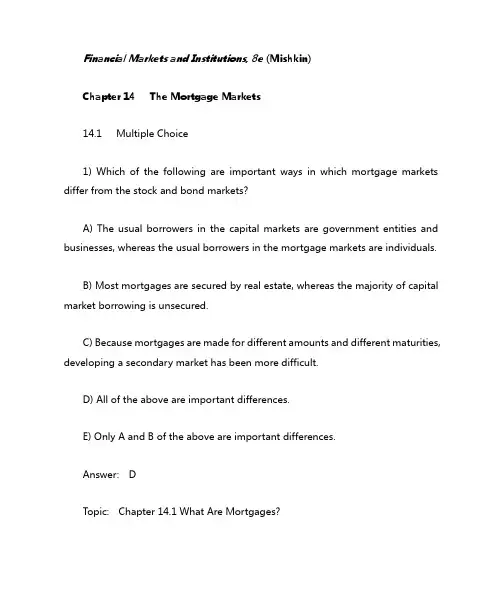
Financial Markets and Institutions, 8e (Mishkin)Chapter 14 The Mortgage Markets14.1 Multiple Choice1) Which of the following are important ways in which mortgage markets differ from the stock and bond markets?A) The usual borrowers in the capital markets are government entities and businesses, whereas the usual borrowers in the mortgage markets are individuals.B) Most mortgages are secured by real estate, whereas the majority of capital market borrowing is unsecured.C) Because mortgages are made for different amounts and different maturities, developing a secondary market has been more difficult.D) All of the above are important differences.E) Only A and B of the above are important differences.Answer: DTopic: Chapter 14.1 What Are Mortgages?Question Status: Previous Edition2) Which of the following are important ways in which mortgage markets differ from stock and bond markets?A) The usual borrowers in capital markets are government entities, whereas the usual borrowers in mortgage markets are small businesses.B) The usual borrowers in capital markets are government entities and large businesses, whereas the usual borrowers in mortgage markets are small businesses.C) The usual borrowers in capital markets are government entities and large businesses, whereas the usual borrowers in mortgage markets are small businesses and individuals.D) The usual borrowers in capital markets are businesses and government entities, whereas the usual borrowers in mortgage markets are individuals.Answer: DTopic: Chapter 14.1 What Are Mortgages?Question Status: Previous Edition3) Which of the following are true of mortgages?A) A mortgage is a long-term loan secured by real estate.B) A borrower pays off a mortgage in a combination of principal and interest payments that result in full payment of the debt by maturity.C) Over 80 percent of mortgage loans finance residential home purchases.D) All of the above are true of mortgages.E) Only A and B of the above are true of mortgages.Answer: DTopic: Chapter 14.1 What Are Mortgages?Question Status: Previous Edition4) Which of the following are true of mortgages?A) A mortgage is a long-term loan secured by real estate.B) Borrowers pay off mortgages over time in some combination of principal and interest payments that result in full payment of the debt by maturity.C) Less than 65 percent of mortgage loans finance residential home purchases.D) All of the above are true of mortgages.E) Only A and B of the above are true of mortgages.Answer: ETopic: Chapter 14.1 What Are Mortgages?Question Status: Previous Edition5) Which of the following are true of mortgage interest rates?A) Interest rates on mortgage loans are determined by three factors: current long-term market rates, the term of the mortgage, and the number of discount points paid.B) Mortgage interest rates tend to track along with Treasury bond rates.C) The interest rate on 15-year mortgages is lower than the rate on 30-year mortgages, all else the same.D) All of the above are true.E) Only A and B of the above are true.Answer: DTopic: Chapter 14.2 Characteristics of the Residential MortgageQuestion Status: Previous Edition6) Which of the following are true of mortgages?A) More than 80 percent of mortgage loans finance residential home purchases.B) The National Banking Act of 1863 rewarded banks that increased mortgage lending.C) Most mortgages during the 1920s and 1930s were balloon loans.D) All of the above are true.E) Only A and C of the above are true.Answer: ETopic: Chapter 14.1 What Are Mortgages?Question Status: Previous Edition7) Which of the following is true of mortgage interest rates?A) Longer-term mortgages have lower interest rates than shorter-term mortgages.B) Mortgage rates are lower than Treasury bond rates because of the tax deductibility of mortgage interest rates.C) In exchange for points, lenders reduce interest rates on mortgage loans.D) All of the above are true.E) Only A and B of the above are true.Answer: CTopic: Chapter 14.2 Characteristics of the Residential MortgageQuestion Status: Previous Edition8) Typically, discount points should not be paid if the borrower will pay off the loan in ________ years or less.A) 5B) 10C) 15D) 20Answer: ATopic: Chapter 14.2 Characteristics of the Residential MortgageQuestion Status: Previous Edition9) Which of the following is true of mortgage interest rates?A) Longer-term mortgages have higher interest rates than shorter-term mortgages.B) In exchange for points, lenders reduce interest rates on mortgage loans.C) Mortgage rates are lower than Treasury bond rates because of the tax deductibility of mortgage interest payments.D) All of the above are true.E) Only A and B of the above are true.Answer: ETopic: Chapter 14.2 Characteristics of the Residential MortgageQuestion Status: Previous Edition10) Which of the following reduces moral hazard for the mortgage borrower?A) CollateralB) Down paymentsC) Private mortgage insuranceD) Borrower qualificationsAnswer: BTopic: Chapter 14.2 Characteristics of the Residential MortgageQuestion Status: Previous Edition11) Which of the following protects the mortgage lender's right to sell property if the underlying loan defaults?A) A lienB) A down paymentC) Private mortgage insuranceD) Borrower qualificationE) AmortizationAnswer: ATopic: Chapter 14.2 Characteristics of the Residential MortgageQuestion Status: Previous Edition12) Which of the following is true of mortgage interest rates?A) Mortgage rates are closely tied to Treasury bond rates, but mortgage rates tend to stay below Treasury rates because mortgages are secured with collateral.B) Longer-term mortgages have higher interest rates than shorter-term mortgages.C) Interest rates are higher on mortgage loans on which lenders charge points.D) All of the above are true.E) Only A and B of the above are true.Answer: BTopic: Chapter 14.2 Characteristics of the Residential MortgageQuestion Status: Previous Edition13) During the early years of an amortizing mortgage loan, the lender appliesA) most of the monthly payment to the outstanding principal balance.B) all of the monthly payment to the outstanding principal balance.C) most of the monthly payment to interest on the loan.D) all of the monthly payment to interest on the loan.E) the monthly payment equally to interest on the loan and the outstanding principal balance.Answer: CTopic: Chapter 14.2 Characteristics of the Residential MortgageQuestion Status: Previous Edition14) During the last years of an amortizing mortgage loan, the lender appliesA) most of the monthly payment to the outstanding principal balance.B) all of the monthly payment to the outstanding principal balance.C) most of the monthly payment to interest on the loan.D) all of the monthly payment to interest on the loan.E) the monthly payment equally to interest on the loan and the outstanding principal balance.Answer: ATopic: Chapter 14.2 Characteristics of the Residential MortgageQuestion Status: Previous Edition15) During the last years of a balloon mortgage loan, the lender appliesA) most of the monthly payment to the outstanding principal balance.B) all of the monthly payment to the outstanding principal balance.C) most of the monthly payment to interest on the loan.D) all of the monthly payment to interest on the loan.E) the monthly payment equally to interest on the loan and the outstanding principal balance.Answer: DTopic: Chapter 14.2 Characteristics of the Residential MortgageQuestion Status: Previous Edition16) During the early years of a balloon mortgage loan, the lender appliesA) most of the monthly payment to the outstanding principal balance.B) all of the monthly payment to the outstanding principal balance.C) most of the monthly payment to interest on the loan.D) all of the monthly payment to interest on the loan.E) the monthly payment equally to interest on the loan and the outstanding principal balance.Answer: DTopic: Chapter 14.2 Characteristics of the Residential MortgageQuestion Status: Previous Edition17) A borrower who qualifies for an FHA or VA loan enjoys the advantage thatA) the mortgage payment is much lower.B) only a very low or zero down payment is required.C) the cost of private mortgage insurance is lower.D) the government holds the lien on the property.Answer: BTopic: Chapter 14.3 Types of MortgagesQuestion Status: Previous Edition18) (I) Conventional mortgages are originated by private lending institutions, and FHA or VA loans are originated by the government. (II) Conventional mortgages are insured by private companies, and FHA or VA loans are insured by the government.A) (I) is true, (II) false.B) (I) is false, (II) true.C) Both are true.D) Both are false.Answer: BTopic: Chapter 14.3 Types of MortgagesQuestion Status: Previous Edition19) Borrowers tend to prefer ________ to ________, whereas lenders prefer ________.A) fixed-rate loans; ARMs; fixed-rate loansB) ARMs; fixed-rate loans; fixed-rate loansC) fixed-rate loans; ARMs; ARMsD) ARMs; fixed-rate loans; ARMsAnswer: CTopic: Chapter 14.3 Types of MortgagesQuestion Status: Previous Edition20) (I) ARMs offer lower initial rates and the rate may fall during the life of the loan. (II) Conventional mortgages do not allow a borrower to take advantage of falling interest rates.A) (I) is true, (II) is false.B) (I) is false, (II) is true.C) Both are true.D) Both are false.Answer: ATopic: Chapter 14.3 Types of MortgagesQuestion Status: Previous Edition21) Growing-equity mortgages (GEMs)A) help the borrower pay off the loan in a shorter time.B) have such low payments in the first few years that the principal balance increases.C) offer borrowers payments that are initially lower than the payments on aconventional mortgage.D) do all of the above.E) do only A and B of the above.Answer: ATopic: Chapter 14.3 Types of MortgagesQuestion Status: Previous Edition22) A borrower with a 30-year loan can create a GEM byA) simply increasing the monthly payments beyond what is required and designating that the excess be applied entirely to the principal.B) converting his ARM into a conventional mortgage.C) converting his conventional mortgage into an ARM.D) converting his conventional mortgage into a GPM.Answer: ATopic: Chapter 14.3 Types of MortgagesQuestion Status: Previous Edition23) Which of the following are useful for home buyers who expect their income to rise in the future?A) GPMsB) RAMsC) GEMsD) Only A and B are useful.E) Only A and C are useful.Answer: ETopic: Chapter 14.3 Types of MortgagesQuestion Status: Previous Edition24) Which of the following are useful for home buyers who expect their income to fall in the future?A) GPMsB) RAMsC) GEMsD) Only A and B are useful.E) Only A and C are useful.Answer: BTopic: Chapter 14.3 Types of MortgagesQuestion Status: Previous Edition25) Retired people can live on the equity they have in their homes by using aA) GEM.B) GPM.C) SAM.D) RAM.Answer: DTopic: Chapter 14.3 Types of MortgagesQuestion Status: Previous Edition26) Second mortgages serve the following purposes:A) they give borrowers a way to use the equity they have in their homes as security for another loan.B) they allow borrowers to get a tax deduction on loans secured by their primary residence or vacation home.C) they allow borrowers to convert their conventional mortgages into GEMs.D) all of the above.E) only A and B of the above.Answer: ETopic: Chapter 14.3 Types of MortgagesQuestion Status: Previous Edition27) Which of the following is a disadvantage of a second mortgage compared to credit card debt?A) The loans are secured by the borrower's home.B) The borrower gives up the tax deduction on the primary mortgage.C) The borrower must pay points to get a second mortgage loan.D) The borrower will find it more difficult to qualify for a second mortgage loan.Answer: ATopic: Chapter 14.3 Types of MortgagesQuestion Status: Previous Edition28) The share of the mortgage market held by savings and loans isA) over 50 percent.B) approximately 40 percent.C) approximately 20 percent.D) less than 5 percent.Answer: DTopic: Chapter 14.4 Mortgage-Lending InstitutionsQuestion Status: Updated from Previous Edition29) The share of the mortgage market held by commercial banks is approximatelyA) 50 percent.B) 30 percent.C) 15 percent.D) 5 percent.Answer: BTopic: Chapter 14.4 Mortgage-Lending Institutions Question Status: Updated from Previous Edition30) A loan-servicing agent willA) package the loan for an investor.B) hold the loan in their investment portfolio.C) collect payments from the borrower.D) do both A and C of the above.E) do both B and C of the above.Answer: CTopic: Chapter 14.5 Loan ServicingQuestion Status: Previous Edition31) Distinct elements of a mortgage loan includeA) origination.B) investment.C) servicing.D) all of the above.E) only B and C of the above.Answer: DTopic: Chapter 14.6 Secondary Mortgage MarketQuestion Status: Previous Edition32) The Federal National Mortgage Association (Fannie Mae)A) was set up to buy mortgages from thrifts so that these institutions could make more loans.B) funds purchases of mortgages by selling bonds to the public.C) provides insurance for certain mortgage contracts.D) does all of the above.E) does only A and B of the above.Answer: ETopic: Chapter 14.6 Secondary Mortgage MarketQuestion Status: Previous Edition33) The Federal Housing Administration (FHA)A) was set up to buy mortgages from thrifts so that these institutions could make more loans.B) funds purchases of mortgages by selling bonds to the public.C) provides insurance for certain mortgage contracts.D) does all of the above.E) does only A and B of the above.Answer: CTopic: Chapter 14.3 Types of MortgagesQuestion Status: Previous Edition34) ________ issues participation certificates, and ________ provides federal insurance for participation certificates.A) Freddie Mac; Freddie MacB) Freddie Mac; Ginnie MaeC) Ginnie Mae; Freddie MacD) Ginnie Mae; Ginnie MaeE) Freddie Mac; no oneAnswer: ETopic: Chapter 14.8 What Is a Mortgage-Backed Security?Question Status: Previous Edition35) REMICs are most likeA) Freddie Mac pass-through securities.B) Ginnie Mae pass-through securities.C) participation certificates.D) collateralized mortgage obligations.Answer: DTopic: Chapter 14.8 What Is a Mortgage-Backed Security? Question Status: Previous Edition36) Ginnie MaeA) insures qualifying mortgages.B) insures pass-through certificates.C) insures collateralized mortgage obligations.D) does only A and B. of the above.E) does only B and C of the above.Answer: BTopic: Chapter 14.8 What Is a Mortgage-Backed Security? Question Status: Previous Edition37) Mortgage-backed securitiesA) have been growing in popularity in recent years as institutional investors look for attractive investment opportunities.B) are securities collateralized by a pool of mortgages.C) are securities collateralized by both insured and uninsured mortgages.D) are all of the above.E) are only A and B of the above.Answer: DTopic: Chapter 14.8 What Is a Mortgage-Backed Security?Question Status: Previous Edition38) The most common type of mortgage-backed security isA) the mortgage pass-through, a security that has the borrower's mortgage payments pass through the trustee before being disbursed to the investors.B) collateralized mortgage obligations, a security which reduces prepayment risk.C) the participation certificate, a security which passes the borrower's mortgage payments equally among all the owners of the certificates.D) the securitized mortgage, a security which increases the liquidity of otherwise illiquid mortgages.Answer: ATopic: Chapter 14.8 What Is a Mortgage-Backed Security?Question Status: Previous Edition39) The interest rate borrowers pay on their mortgages is determined byA) current long-term market rates.B) the term.C) the number of discount points.D) all of the above.Answer: DTopic: Chapter 14.2 Characteristics of the Residential MortgageQuestion Status: Previous Edition40) A loan for borrowers who do not qualify for loans at the usual market rate of interest because of a poor credit rating or because the loan is larger than justified by their income isA) a subprime mortgage.B) a securitized mortgage.C) an insured mortgage.D) a graduated-payment mortgage.Answer: ATopic: Chapter 14.8 What Is a Mortgage-Backed Security?Question Status: Previous Edition41) The percentage of the total loan paid back immediately when a mortgage loan is obtained, which lowers the annual interest rate on the debt, is calledA) discount points.B) loan terms.C) collateral.D) down payment.Answer: ATopic: Chapter 14.2 Characteristics of the Residential MortgageQuestion Status: Previous Edition42) Which of the following terms are found in mortgage loan contracts to protect the lender from financial loss?A) CollateralB) Down paymentC) Private mortgage insuranceD) All of the aboveAnswer: DTopic: Chapter 14.2 Characteristics of the Residential MortgageQuestion Status: Previous Edition43) What factors are used in determining a person's FICO score?A) Past payment historyB) Outstanding debtC) Length of credit historyD) All of the aboveAnswer: DTopic: Chapter 14.2 Characteristics of the Residential MortgageQuestion Status: Previous Edition44) Between 2000 and 2005, home prices increased an average of ________ per year.A) 2%B) 4%C) 8%D) 12%Answer: CTopic: Chapter 14.8 What Is a Mortgage-Backed Security?Question Status: New Question45) From 2000 to 2005, housing prices increased, on average, by over 40%. This run up in prices was caused byA) speculators.B) an increase in subprime loans, which increased demand for new and existing houses.C) both A and B.D) None of the above are correct.Answer: CTopic: Chapter 14.8 What Is a Mortgage-Backed Security?Question Status: Updated from Previous Edition14.2 True/False1) In 2012, mortgage loans to farms represented the largest proportion of mortgage lending in the U.S.Answer: FALSETopic: Chapter 14.1 What Are Mortgages?Question Status: New Question2) Down payments are designed to reduce the likelihood of default on mortgage loans.Answer: TRUETopic: Chapter 14.2 Characteristics of the Residential MortgageQuestion Status: Previous Edition3) Discount points (or simply points) are interest payments made at the beginning of a loan.Answer: TRUETopic: Chapter 14.2 Characteristics of the Residential MortgageQuestion Status: Previous Edition4) A point on a mortgage loan refers to one monthly payment of principal and interest.Answer: FALSETopic: Chapter 14.2 Characteristics of the Residential MortgageQuestion Status: Previous Edition5) Closing for a mortgage loan refers to the moment the loan is paid off.Answer: FALSETopic: Chapter 14.2 Characteristics of the Residential MortgageQuestion Status: Previous Edition6) Private mortgage insurance is a policy that guarantees to make up any discrepancy between the value of the property and the loan amount, should a default occur.Answer: TRUETopic: Chapter 14.2 Characteristics of the Residential MortgageQuestion Status: Previous Edition7) During the early years of a mortgage loan, the lender applies most of the payment to the principal on the loan.Answer: FALSETopic: Chapter 14.2 Characteristics of the Residential MortgageQuestion Status: Previous Edition8) One important advantage to a borrower who qualifies for an FHA or VA loan is the very low interest rate on the mortgage.Answer: FALSETopic: Chapter 14.3 Types of Mortgages9) Adjustable-rate mortgages generally have lower initial interest rates than fixed-rate mortgages.Answer: TRUETopic: Chapter 14.3 Types of MortgagesQuestion Status: Previous Edition10) Mortgage interest rates loosely track interest rates on three-month Treasury bills.Answer: FALSETopic: Chapter 14.3 Types of MortgagesQuestion Status: Previous Edition11) An advantage of a graduated-payment mortgage is that borrowers will qualify for a larger loan than if they requested a conventional mortgage.Answer: TRUETopic: Chapter 14.3 Types of Mortgages12) Nearly half the funds for mortgage lending comes from mortgage pools and trusts.Answer: FALSETopic: Chapter 14.4 Mortgage-Lending InstitutionsQuestion Status: Updated from Previous Edition13) Many institutions that make mortgage loans do not want to hold large portfolios of long-term securities, because it would subject them to unacceptably high interest-rate risk.Answer: TRUETopic: Chapter 14.4 Mortgage-Lending InstitutionsQuestion Status: Previous Edition14) A problem that initially hindered the marketability of mortgages in a secondary market was that they were not standardized.Answer: TRUETopic: Chapter 14.6 Secondary Mortgage MarketQuestion Status: Previous Edition15) Mortgage-backed securities have declined in popularity in recent years as institutional investors have sought higher returns in other markets.Answer: FALSETopic: Chapter 14.8 What Is a Mortgage-Backed Security?Question Status: Previous Edition16) Mortgage-backed securities are marketable securities collateralized by a pool of mortgages.Answer: TRUETopic: Chapter 14.8 What Is a Mortgage-Backed Security?Question Status: Previous Edition17) Fannie Mae and Freddie Mac together either own or insure the risk on nearly one-fourth of America's residential mortgages.Answer: FALSETopic: Chapter 14.4 Mortgage-Lending InstitutionsQuestion Status: Previous Edition18) A FICO score below 660 is considered good while a score above 720 is likely to cause problems in obtaining a loan.Answer: FALSETopic: Chapter 14.2 Characteristics of the Residential MortgageQuestion Status: Previous Edition19) Subprime loans are those made to borrowers who do not qualify for loans at the usual market rate of interest because of a poor credit rating or because the loan is larger than justified by their income.Answer: TRUETopic: Chapter 14.8 What Is a Mortgage-Backed Security?Question Status: Previous Edition14.3 Essay1) How has the modern mortgage market changed over recent years?Topic: Chapter 14.1 What Are Mortgages?Question Status: Previous Edition2) Explain the features of mortgage loans that are designed to reduce the likelihood of default.Topic: Chapter 14.2 Characteristics of the Residential MortgageQuestion Status: Previous Edition3) What are points? What is their purpose?Topic: Chapter 14.2 Characteristics of the Residential MortgageQuestion Status: Previous Edition4) How does an amortizing mortgage loan differ from a balloon mortgage loan?Topic: Chapter 14.2 Characteristics of the Residential MortgageQuestion Status: Previous Edition5) Evaluate the advantages and disadvantages, from both the lender's and borrower's perspectives, of fixed-rate and adjustable-rate mortgages.Topic: Chapter 14.3 Types of MortgagesQuestion Status: Previous Edition6) Why has the online lending market developed in recent years and what are the advantages and disadvantages of this development?Topic: Chapter 14.4 Mortgage-Lending InstitutionsQuestion Status: Previous Edition7) Why may Fannie Mae and Freddie Mac pose a threat to the health of the financial system?Topic: Chapter 14.8 What Is a Mortgage-Backed Security?Question Status: Previous Edition8) What are mortgage-backed securities, why were they developed, whattypes of mortgage-backed securities are there, and how do they work?Topic: Chapter 14.8 What Is a Mortgage-Backed Security?Question Status: Previous Edition9) What are the benefits and side effects of securitized mortgages?Topic: Chapter 14.7 Securitization of MortgagesQuestion Status: Previous Edition10) Discuss the pros and cons of a subprime market for residential mortgages in the U.S.Topic: Chapter 14.8 What Is a Mortgage-Backed Security?Question Status: New Question。
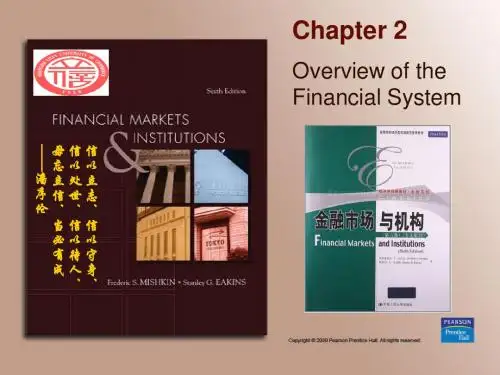

金融市场机构与工具》教学大纲一、课程基本信息二、课程的对象和性质本课程的授课对象为章乃器学院金融学专业学生,性质是专业必修课。
本课程侧重于培养学生面对金融市场的实践感知能力,灵活应用所学金融理论知识理解现代金融市场运作特点的能力。
通过本课程的学习,着眼于提供一个对金融市场的职能、定价和制度性结构的透析,略去宏观经济学工具的同时,给出了不同金融工具的定价方法,以与市场中运做的工具与机构间的差别,本课程要求学生具备一定的西方经济学、会计学、统计学、数学、计算机软件应用的前期知识,具备基础概念认知、计算评估、报表分析、文字描述等能力。
学习过程前后,学生应该对金融与相关市场有一定的了解与关注。
三、课程的教学目的和要求通过本课程学习,具有一定的分析美国金融市场与金融机构现象的能力。
了解中国金融市场与金融机构发展的现状与主要问题。
理解存款性金融机构的业务特点,风险来源,以与金融监管的方法。
理解投资基金的种类、结构以与主要热点问题的解释:如基金表现,封闭性基金折价等。
理解投资银行的主要业务以与主要市场现象,如IPO抑价、股价支持,声誉资本等。
解释金融市场的组织与微观结构,如股票发行过程,交易市场的结构,做市商制度与竞价制度等从市场结构角度分析基本的市场操纵现象,如专营商非法获利,做市商报价问题等。
提高伦理意识。
解释中央银行是如何介入金融市场的。
明显提高口头与书面分析金融市场与金融机构问题的能力。
四、授课方法在课堂教学中注意使用启发式,讲授和讨论相结合,加强习题课和课堂讨论,因材施教。
在课堂外面引导学生查阅资料并进行文献综述,每章要求学生写小论文,教学实习等进行教学。
改变过去单一的闭卷考试方式,代之实施一套“闭卷+课程论文+实验动手能力”等多种有利于学生创新能力培养的考试方法,考试重点从获取知识量向知识、能力、综合素质的评价转移,注重对学生知识运用能力的考察。
使用Powerpoint软件完成教学幻灯片的制作,将课程介绍、教学大纲、教材、教案、教学安排和教学进度、参考阅读资料、习题等在网上公开,以利于学生对本课程的了解、利于学生对所学知识的复习、自学和交流。
金融学经典十大书籍金融学是现代社会非常重要的一门学科,涉及到金融市场、投资、风险管理等诸多领域。
对于想要深入了解金融学的人来说,阅读经典的金融学书籍是一种很好的学习途径。
下面是十本被公认为金融学经典之作的书籍,它们涵盖了金融学的各个方面,对于金融学的学习和研究具有重要的参考价值。
1.《金融市场与机构》(Financial Markets and Institutions)《金融市场与机构》是金融学领域的经典教材之一,作者是美国经济学家弗雷德里克·S·米什金。
本书对金融市场的运作、金融机构的功能和角色等进行了深入的分析和阐述,是理解金融市场和金融机构的基础。
2.《金融学原理》(Principles of Corporate Finance)《金融学原理》是美国经济学家理查德·A·布雷利、斯图尔特·C·迈尔斯和弗兰克林·艾伦的合著,是金融学领域的经典教材之一。
本书系统介绍了公司金融学的基本原理和方法,包括投资决策、融资决策和股东权益等内容,对于企业金融决策具有重要的指导意义。
3.《证券分析》(Security Analysis)《证券分析》是美国经济学家本杰明·格雷厄姆和大卫·杜杜勒的合著,被誉为价值投资的圣经。
本书介绍了证券分析的基本原理和方法,包括财务分析、估值方法等,对于投资者进行价值投资具有重要的指导意义。
4.《期权、期货和其他衍生品》(Options, Futures, and Other Derivatives)《期权、期货和其他衍生品》是美国经济学家约翰·C·哈尔的著作,是关于金融衍生品的经典教材。
本书介绍了期权、期货和其他衍生品的基本概念、定价模型和交易策略等内容,对于理解和应用金融衍生品具有重要的参考价值。
5.《金融工程》(Financial Engineering)《金融工程》是美国经济学家罗伯特·C·米顿的著作,是关于金融工程学的经典教材。
金融市场与金融机构第九版中文1.金融市场是现代经济的重要组成部分。
The financial market is an important part of the modern economy.2.金融市场是资金融通的地方。
The financial market is where funds are transferred.3.金融市场包括债券市场、股票市场和外汇市场。
The financial market includes bond market, stock market, and foreign exchange market.4.金融市场提供了公司融资的途径。
The financial market offers a way for companies to raise funds.5.金融机构是金融市场的参与者。
Financial institutions are participants in the financial market.6.金融机构包括银行、证券公司和保险公司。
Financial institutions include banks, securities firms, and insurance companies.7.金融机构提供了资金媒介和风险管理服务。
Financial institutions provide fund intermediation and risk management services.8.金融机构的角色是促进资金在金融市场的流动。
The role of financial institutions is to facilitate the flow of funds in the financial market.9.金融机构也承担着资金监管和监督的责任。
Financial institutions also have the responsibility of fund regulation and supervision.10.金融机构通常受到政府监管。